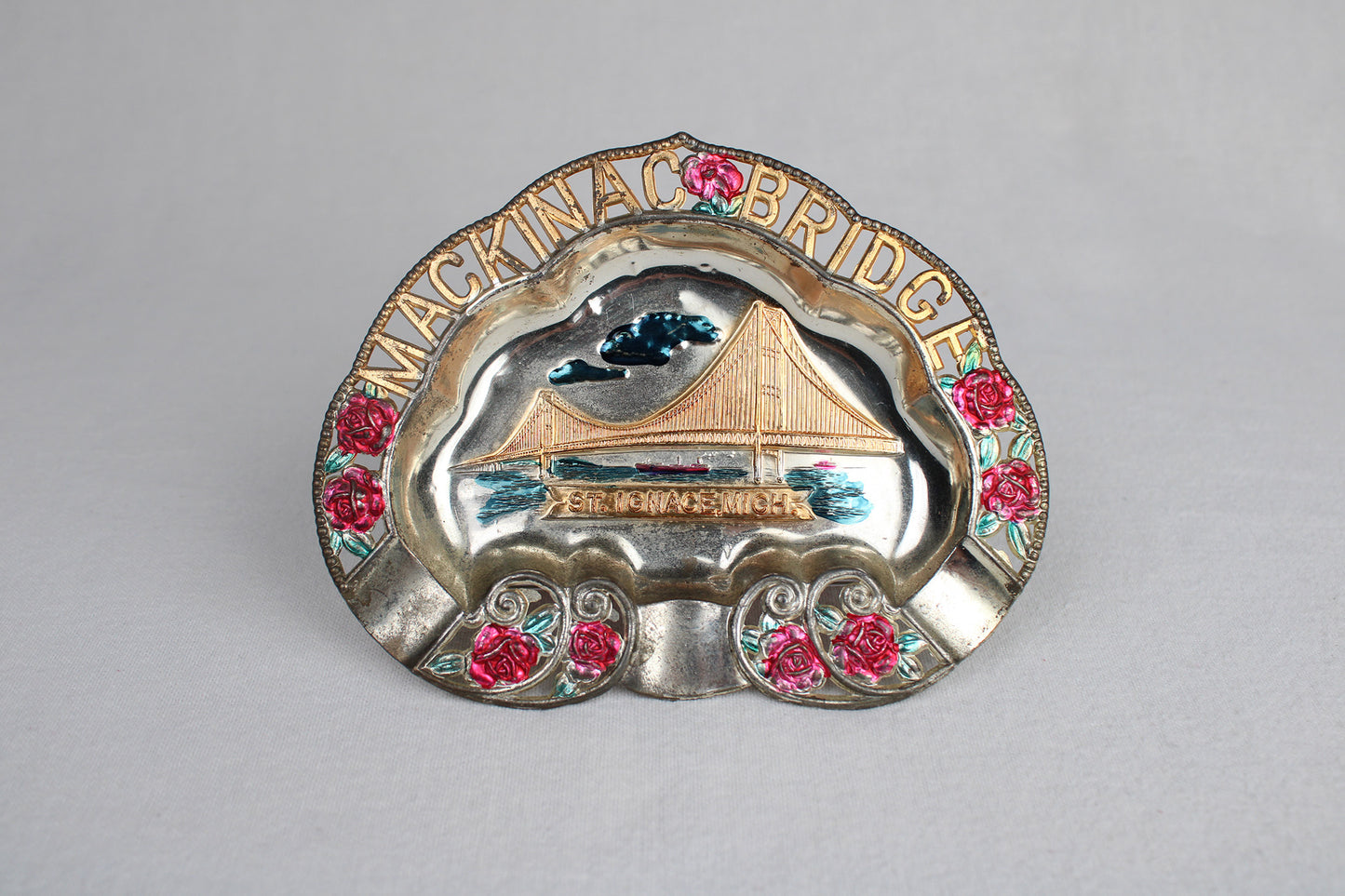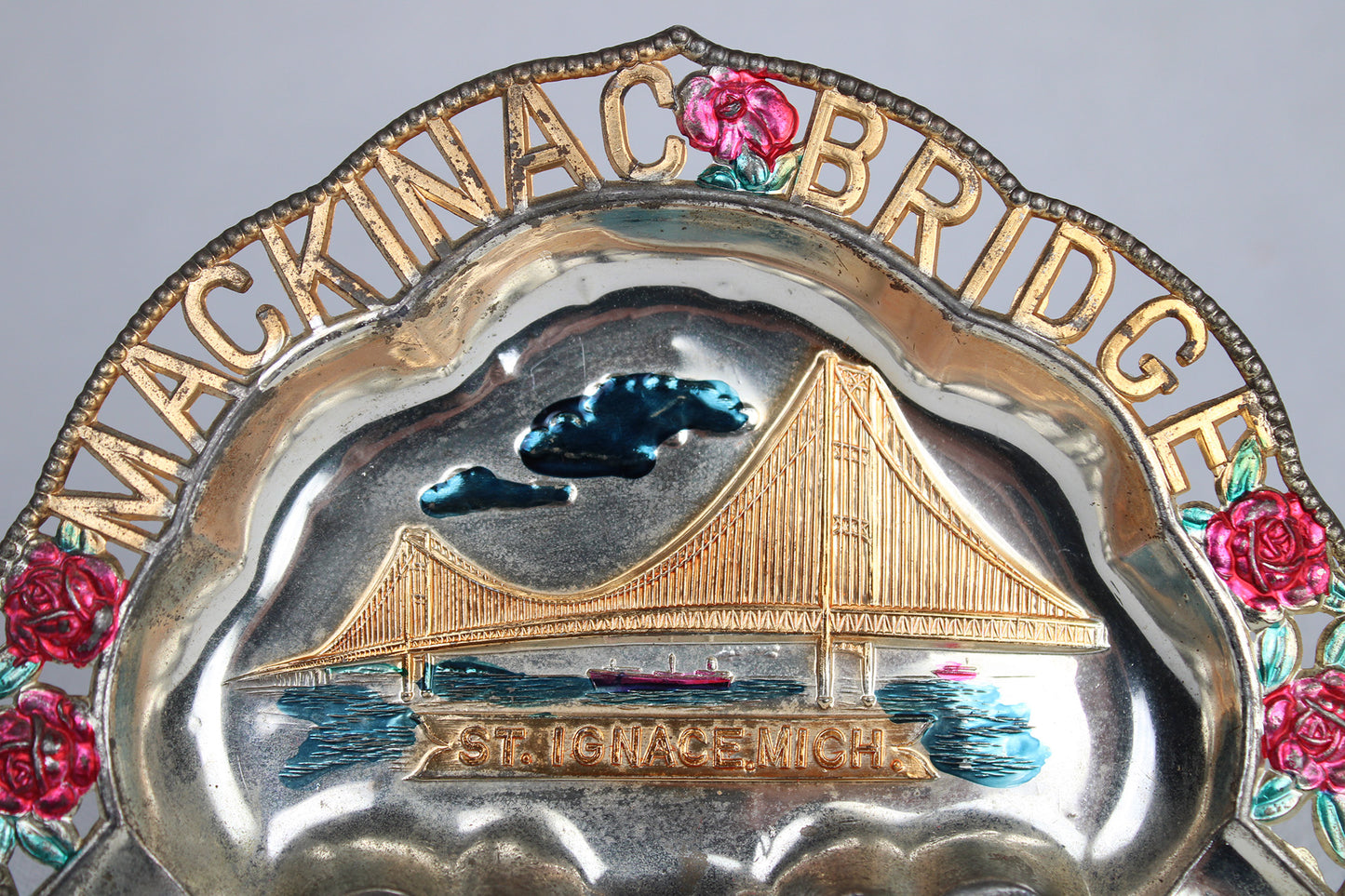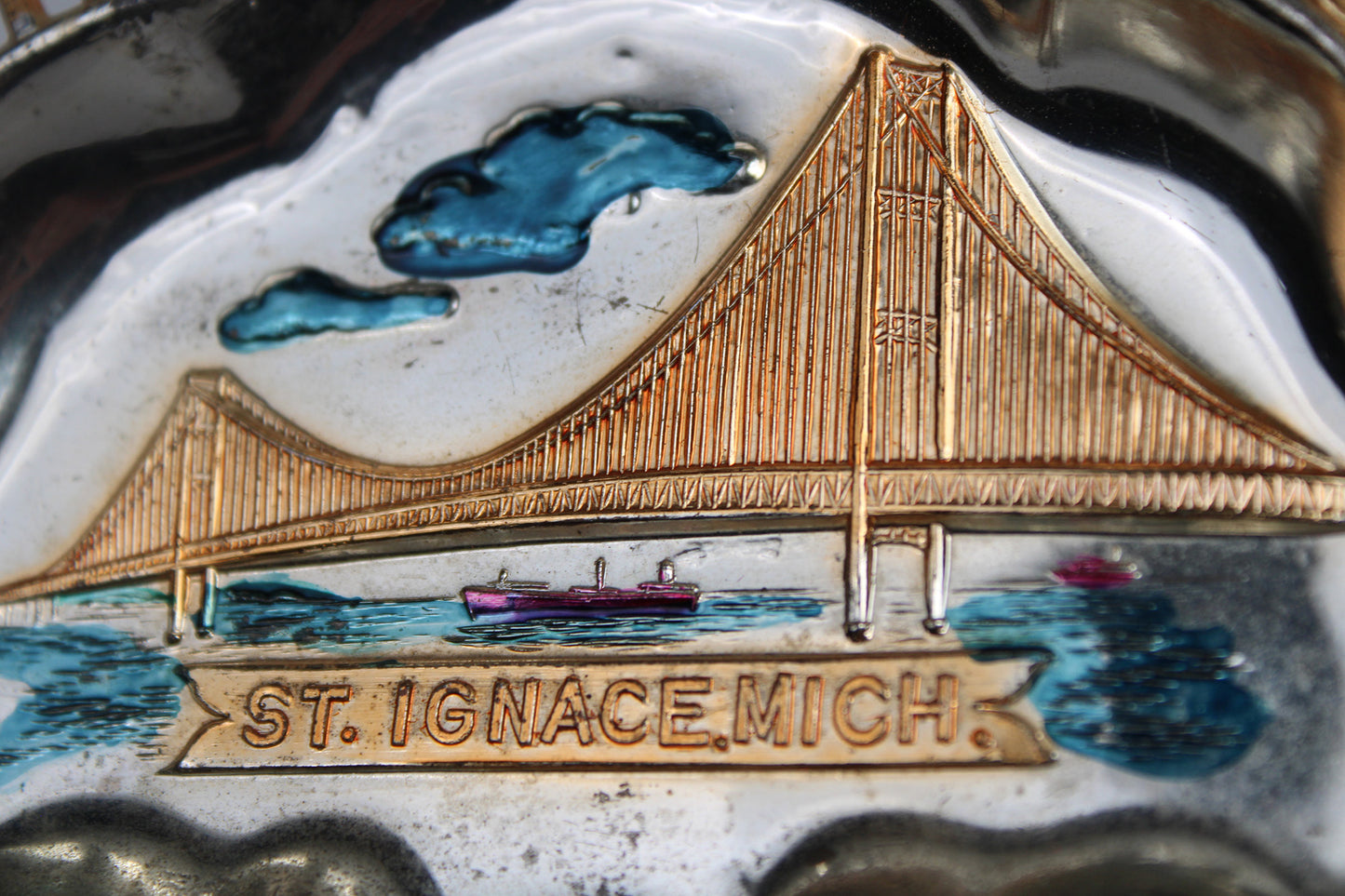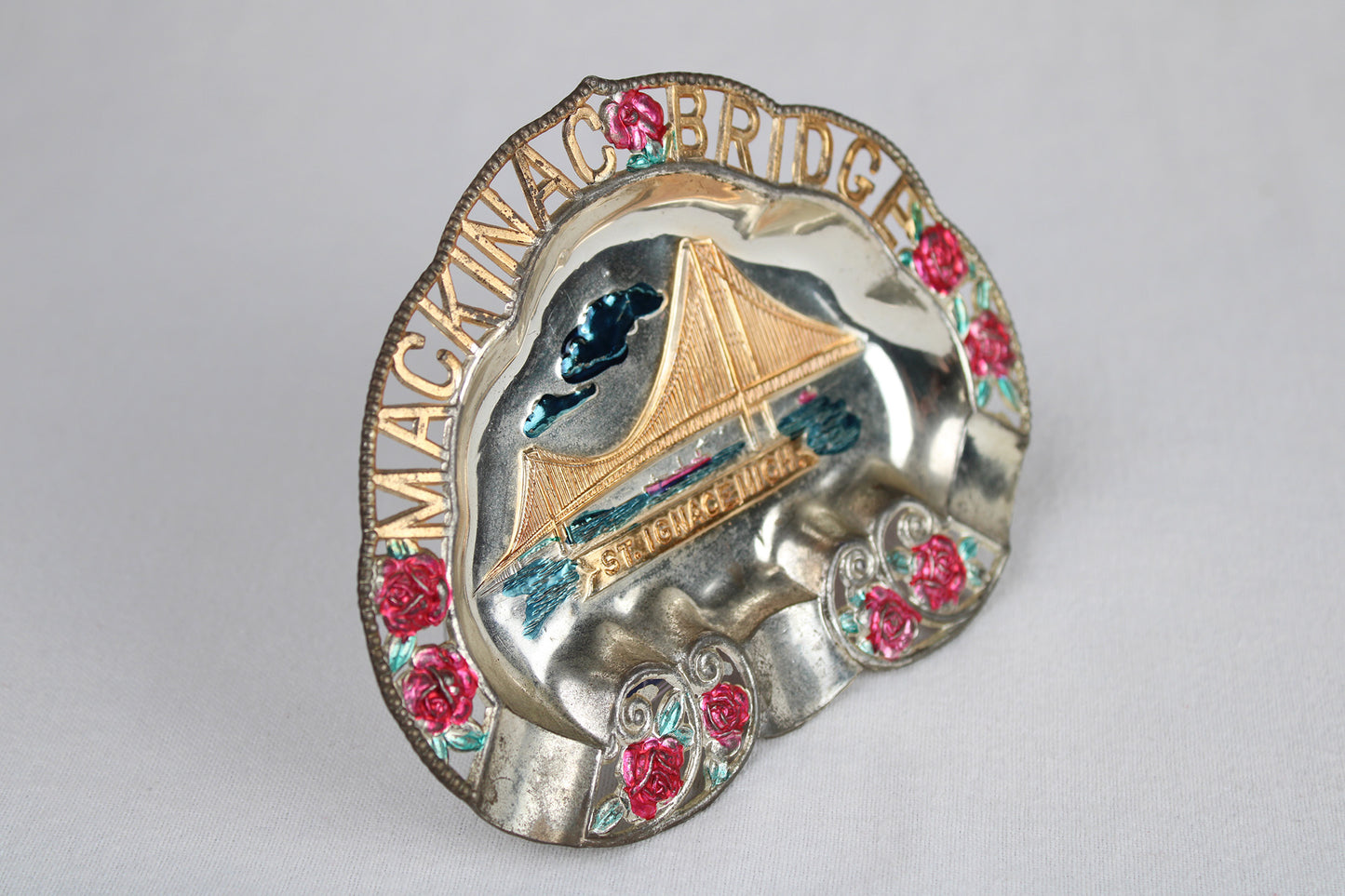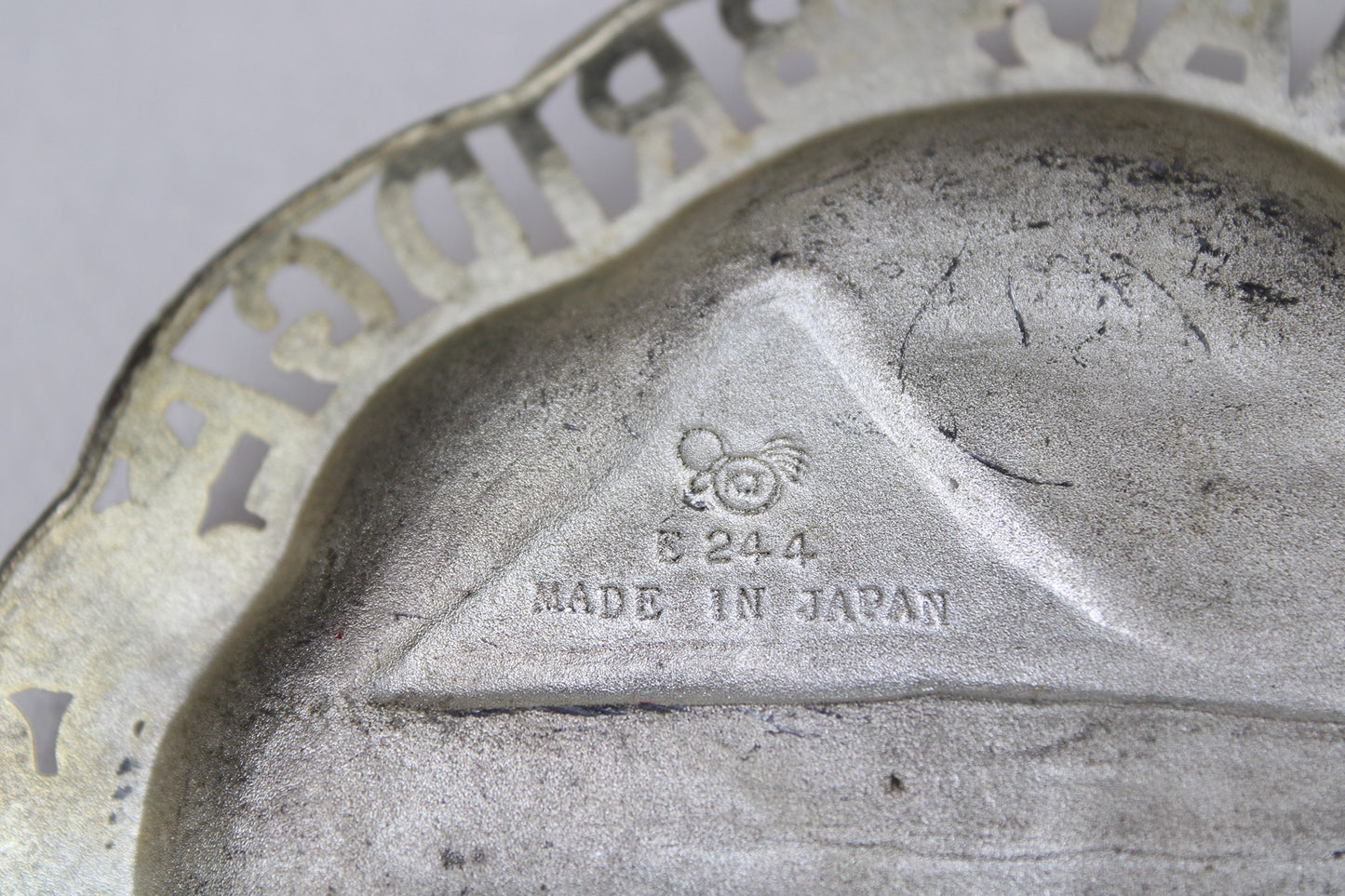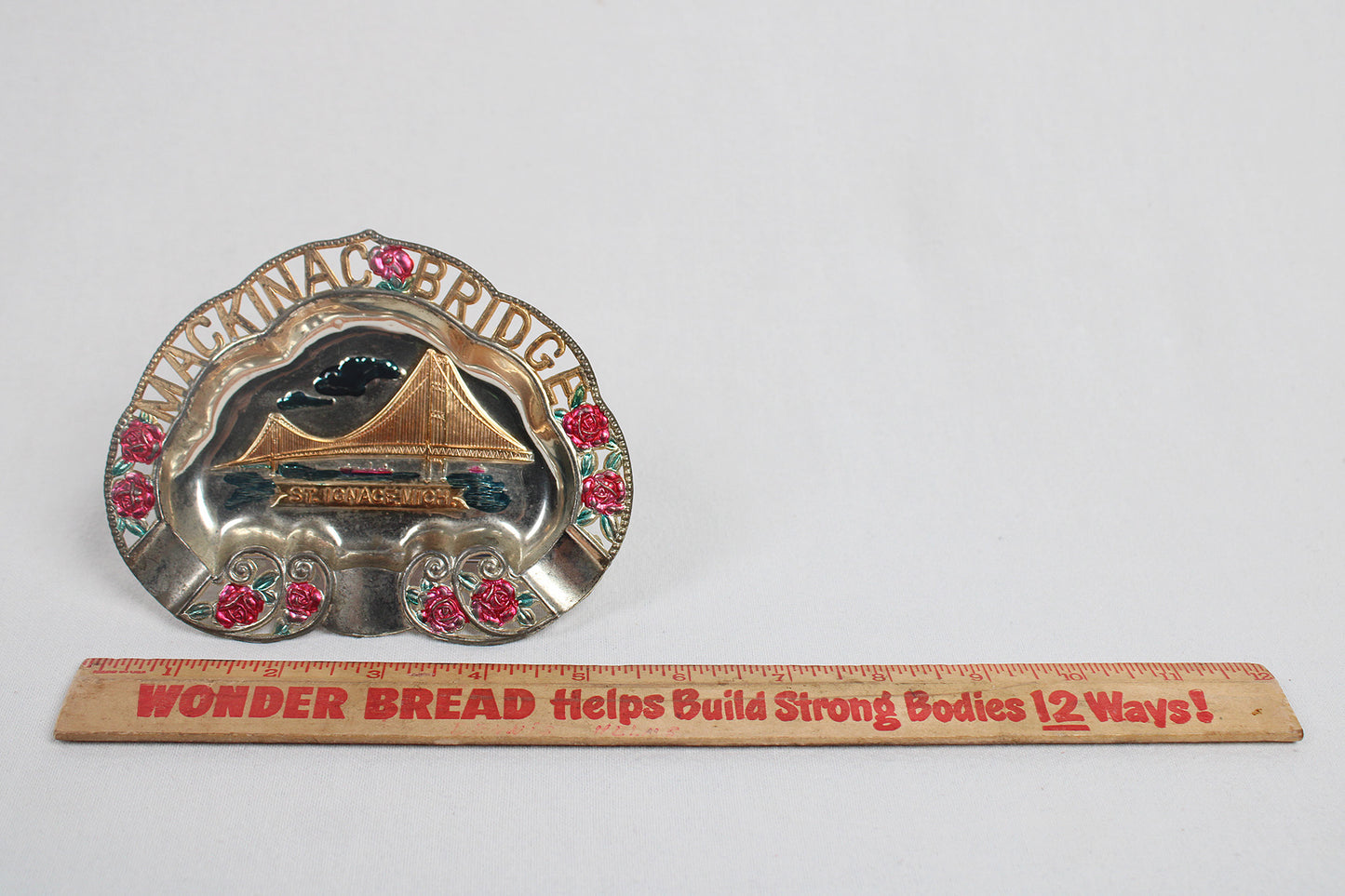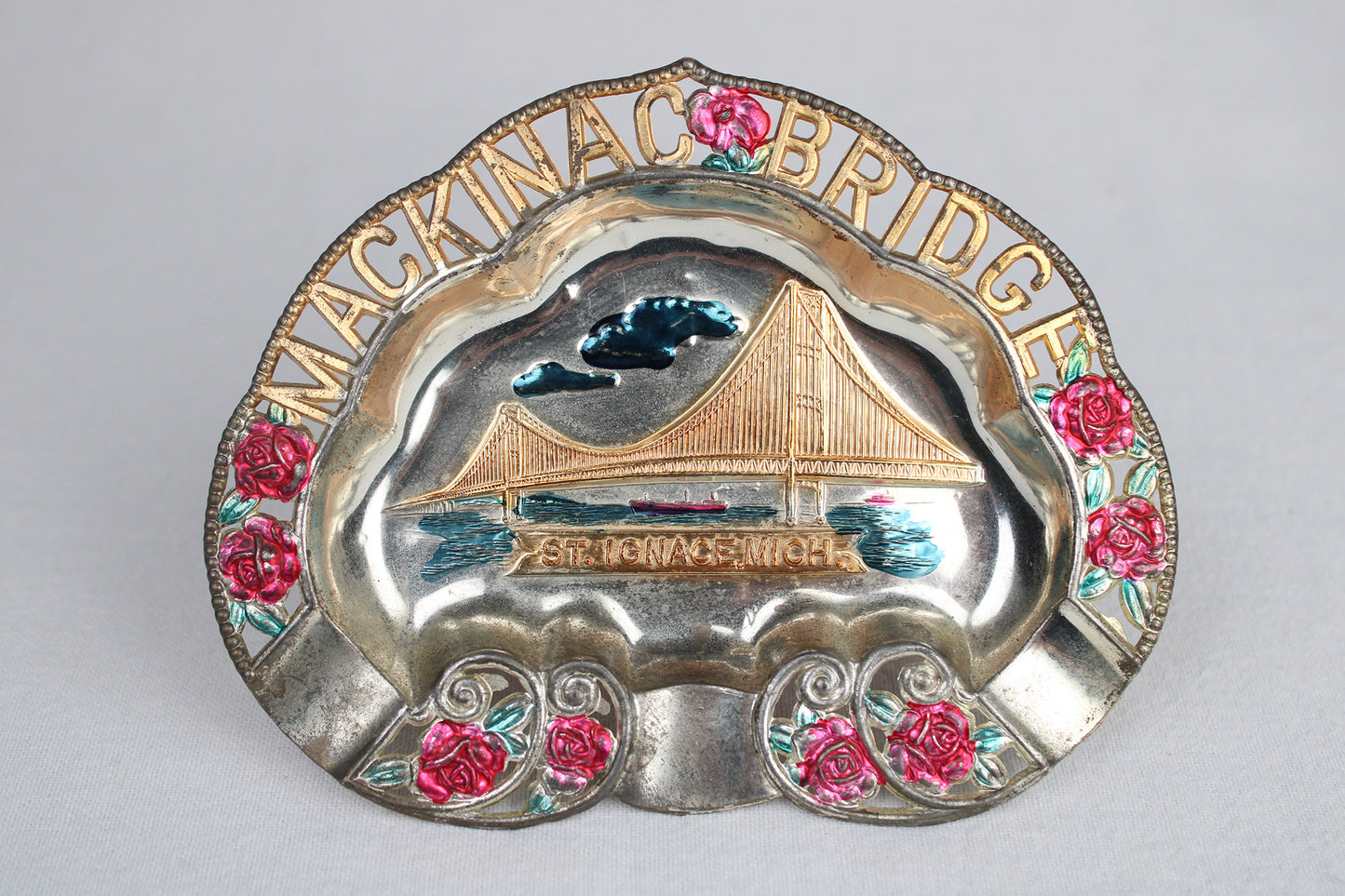The Regionals
Mackinac Bridge Metal Ashtray Souvenir
Mackinac Bridge Metal Ashtray Souvenir
Couldn't load pickup availability
THE MIDWEST.
Home Decor, Decorative Ashtray, Souvenir, c. 1950s.
These small metal ashtrays (incorporating tell-tale cigarette rest notches) were very popular for a run of years following World War II. Sold in souvenir shops across America and Canada when smoking was still very much a mainstream habit, these trays, each with a specific regional connection, were bought as memorabilia of trips taken / sights-seen and certainly given as gifts to family and friends. The trays were mass-produced by way of intricate custom molds, be it a state or a site, with the finished piece lightly hand-painted to pull out details unique to each tray. The rim of this ashtray prominently features the Mackinac Bridge title and includes a ring of roses. It all frames a deep perspective view of this most famous engineering feat. A location of trade and travel long before Europeans arrived, the Straits of Mackinac (which connects Lake Michigan to the west and Lake Huron to the east) became a bustling region by the eighteenth century, having become a favorite vacation spot by the end of the nineteenth. Connecting Mackinaw City on Michigan’s lower peninsula to St. Ignace on its upper peninsula had long been a goal of many engineers and visionaries, one that was finally achieved after decades of preparation and construction by way of the Mackinac Bridge. The bridge opened to traffic on November 1, 1957, and was formally dedicated the following June. At the time, it was one of the longest suspension bridges in the world and included the longest span “between anchorages” (noted by the span having only two towers), eclipsing even San Francisco’s massive Golden Gate Bridge. Though much longer suspension bridges have been built since, it retains this “between anchorages” distinction in the western hemisphere. As with all the small trays in this souvenir series, it bears the mark: “Made in Japan.” This will seem curious considering the violent events of the early-mid 20th century. Here is a bit more background … Following Japan’s surrender in September 1945 ending World War II, Japan was a military occupied country. This continued until the San Francisco Peace Treaty of 1952 returned national sovereignty to the island nation. Once international trade was allowed to resume in 1947, the General Headquarters of the Allied Forces (GHQ a mostly American military government charged with running the conquered nation) mandated that export items carry the label: “Made in Occupied Japan.” The directive was updated in 1949 for use minus the word “Occupied.” As a result these two labels “Made in Occupied Japan” and “Made in Japan” (often just “Japan”) can be dated with specificity to the 15 years following the Second World War. They have become markers for valuable vintage memorabilia. [This tray, a later release of this series almost a decade old by that point, is in solid shape with only slight age-related wear on its plating and notches.]
Condition: Very Good.
Local / Regional Attractions.
5.25” wide x 4” high x 0.25” deep / 4 oz
1 in stock
Share
